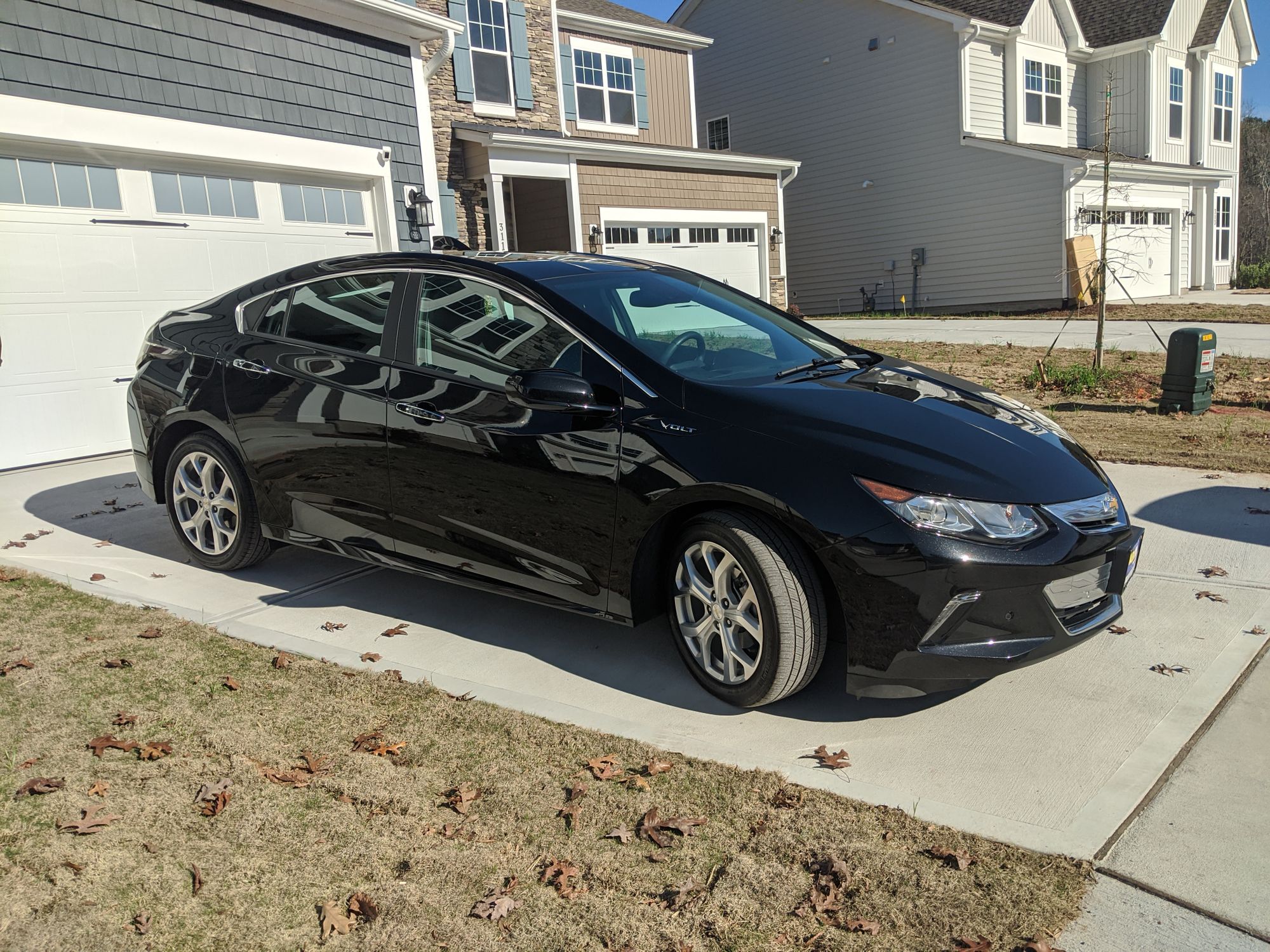I've never been a car guy. I appreciate a nice Mustang or Corvette as much as the next American but I always knew I was way out of my depth compared to the guys who had been studying hot rods since high school.
Then came the beginning of this year, and it was time to replace my aging Ford Focus hatchback that was I quite fond of. It was getting up in miles and with plans to start a family, having something more reliable was Stephanie's main criterion. And, of course, paying cash.
At the time the Volt was dull memory in the back of my mind, something from 8 years ago that didn't come up much.
I looked at hatchbacks that would give me the same amount of space to haul a cart of stuff to the range, including 4 foot long wooden sticks and a folded EZ-UP. We looked at models with all-wheel drive ("Still probably better not to try to drive in the snow if we can avoid it."), tow hitches ("If we need to move that much stuff, we can just rent a UHaul like always have.") or roof racks ("If we are going on a road trip, we'll probably take the Rav4 anyway.")
I sat at a stalemate for a few weeks. No clear reason to prefer one car over another. And I liked my Focus, so inaction suited me just fine. And then I saw a Volt on TV. I told Steph I recognized it, and talked about the story of Jim's Volt. And within about five minutes, we both knew that was the answer.
The logjam had been broken. The weeks spent searching for hatchbacks armed us to know this actually met all my criteria neatly. A few days of customary bargain hunting, as well as understanding what the heck the different trim packages meant, and we had found it, just at the top of end our budget. A used 2017 Chevy Volt.

It's a second-gen, in contrast to the first-gen that Jim had (being the first model year, of course). The outside is less Prius and more "generic sedan". (That, plus the black color makes it visually mostly unremarkable which is just fine by me.) The inside is less "Starship Enterprise" and more "2010s standard car". The battery is rated for 55 miles on a good charge instead of 40.
But the heart of it is still a wacky bet on a configuration of car that nobody else ever made. It's the kind of thing that shouldn't work, but does. Since we've bought it six months ago, I've put ten gallons of gas in it. (Normally the COVID pandemic would change those numbers because I'm driving less, but my commute was comfortably inside the all-electric range, even without using the charger in the parking decks near my office.)
When it's running on gas, it's a little sluggish to accelerate (similar to how I've heard "turbo lag" described, but obviously with a completely different mechanism). But I'm not timing quarter miles or racing off a stop light.
So, why not buy a Tesla? Despite being debt free except for the house, we still aren't made of money. The cheapest used Teslas I could find were $10,000 more with a 200 mile range. And, honestly, for commuting 200 miles is overkill, but for a road trip to visit family in South Carolina it's not enough. So we'd be back to burning gas for long trips anyway. At least this way we have the option of longer range, for the few times a year we end up needing it.
And, of course, if we ever take it to Rock Hill, we know there's a 220V charger there to use.
